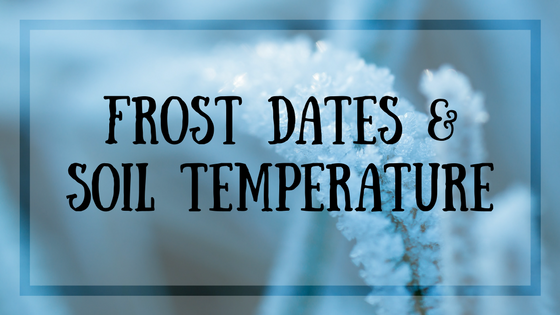
On the ends of the growing season, during the early spring and the late fall, it’s important to keep a sharp eye on the weather report. As all Coloradans know, weather during these strong seasons can change on a dime. Here’s some important dates to keep in mind when your out in your garden in the spring and fall.
The Last Average Frost Date This is the date after which you wouldn’t expect any more freezing weather until the next fall. Of course, Mother Nature has some funny ideas about when to start spring. Here in Denver, the last frost of the year has happened as late as June 2nd (way back in 1951)! But, generally speaking, Mother’s Day (which always falls on the second Sunday of May) is usually a safe estimate of the last frost.
To get more specific, The CSU Extension Office offers these guidelines based on 47 years of observation:
After May 2nd 50% Chance of Frost After May 12th 20% Chance of Frost After May 18th 10% Chance of Frost
Soil Temperature Air temperature isn’t the only thing to keep in mind when planting your garden. Cold soil can slow growth and even inhibit seed germination. A soil thermometer will give you a super accurate reading of your beds. Or you can even use a meat thermometer. Just remember to wash it off before your next pot roast!
Different plants prefer different soil temperatures. Cold crops like spinach or like it around 45 degrees. Warmer crops like tomatoes and peppers need a temperature around 60 to 65 degrees. And melons need a full 70 degrees before they are comfortable. Check your seed packets for more info. Or just ask one of the knowledgeable staff at your favorite garden center! The First Average Frost DateThis is the date around which we usually get the very first freeze of the fall. Here in Denver, that generally falls right around September 15th. Again, this is just an estimate, but mid September is a pretty good time to start winding down your garden and getting it ready for winter time.
